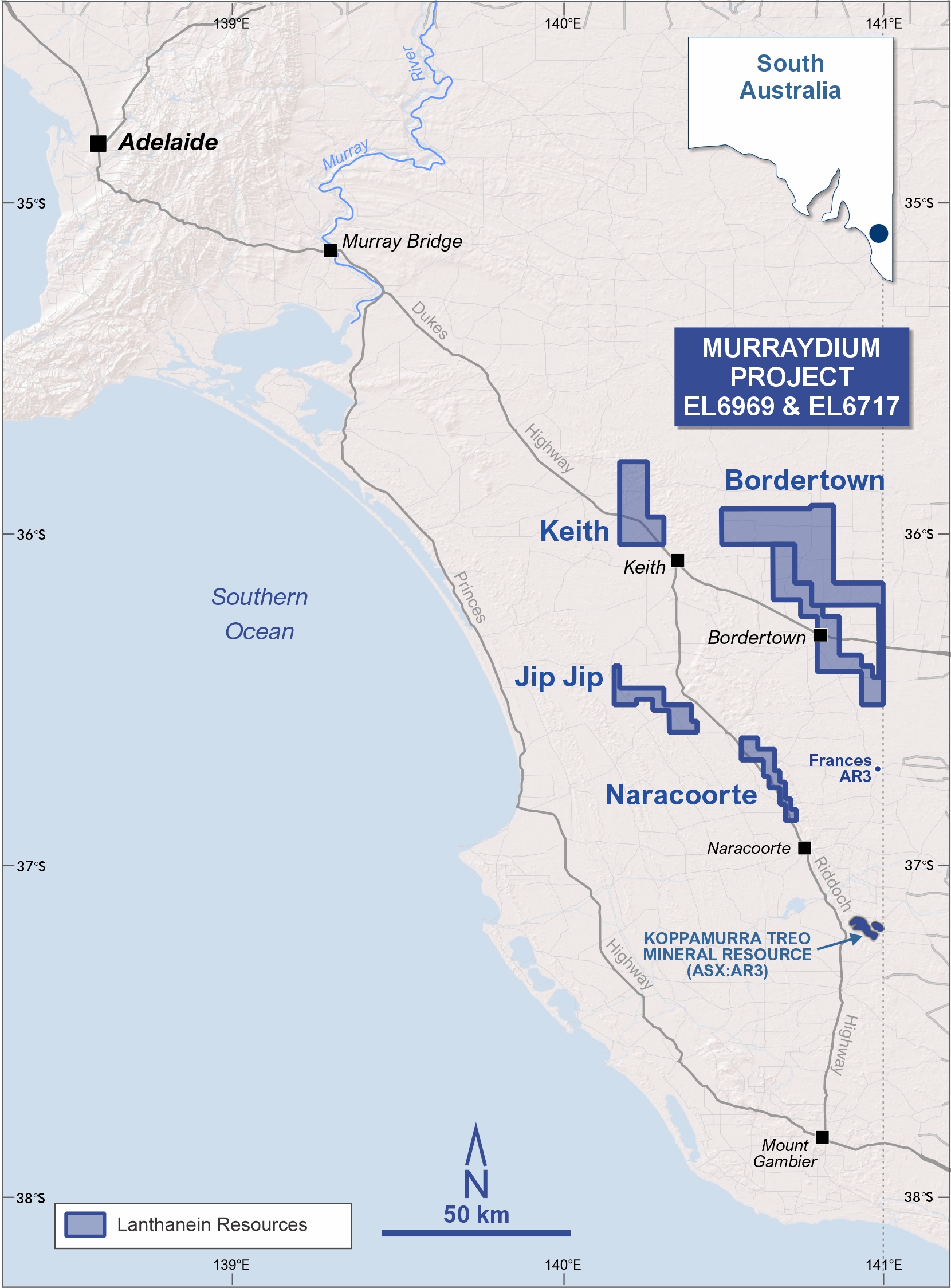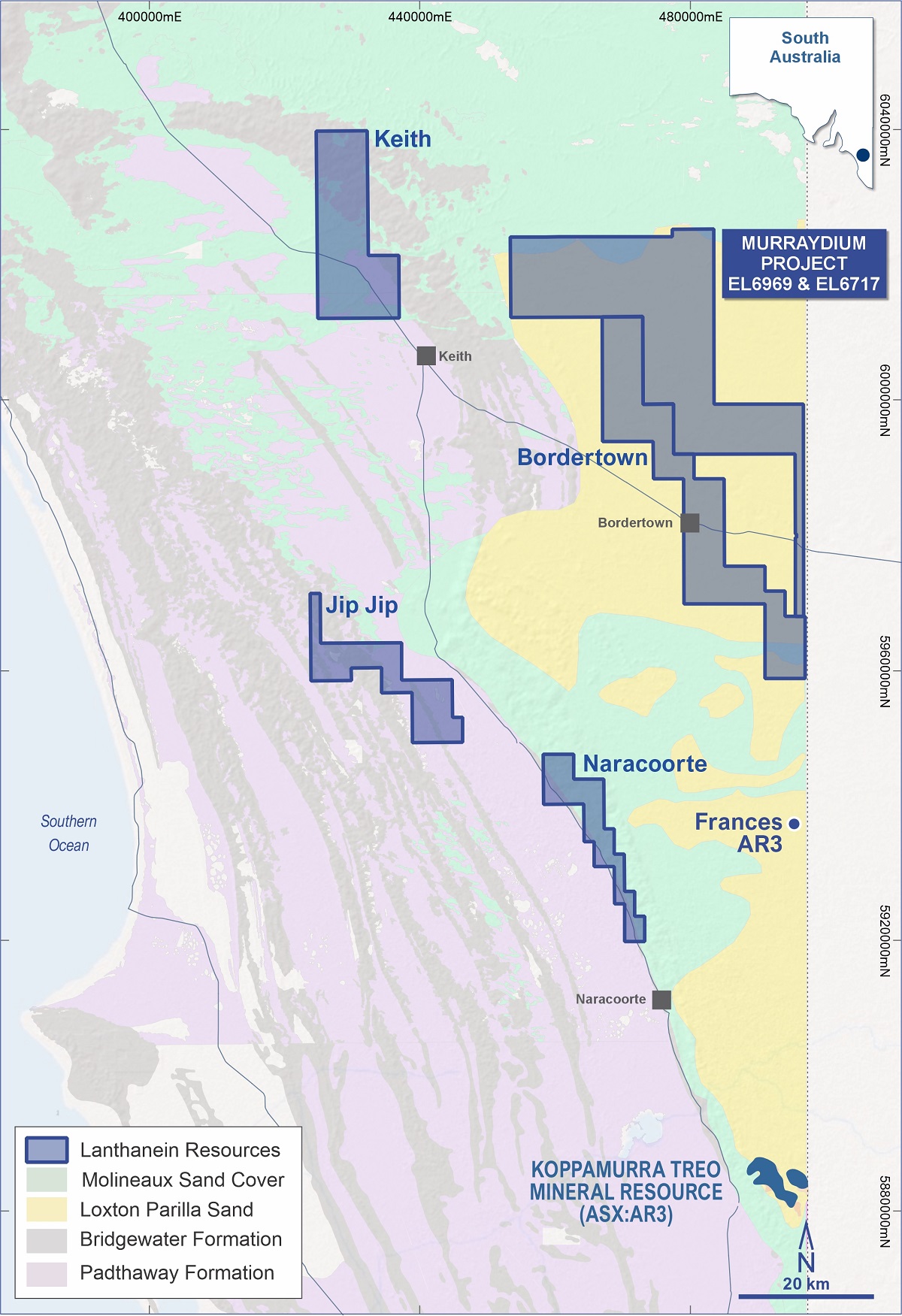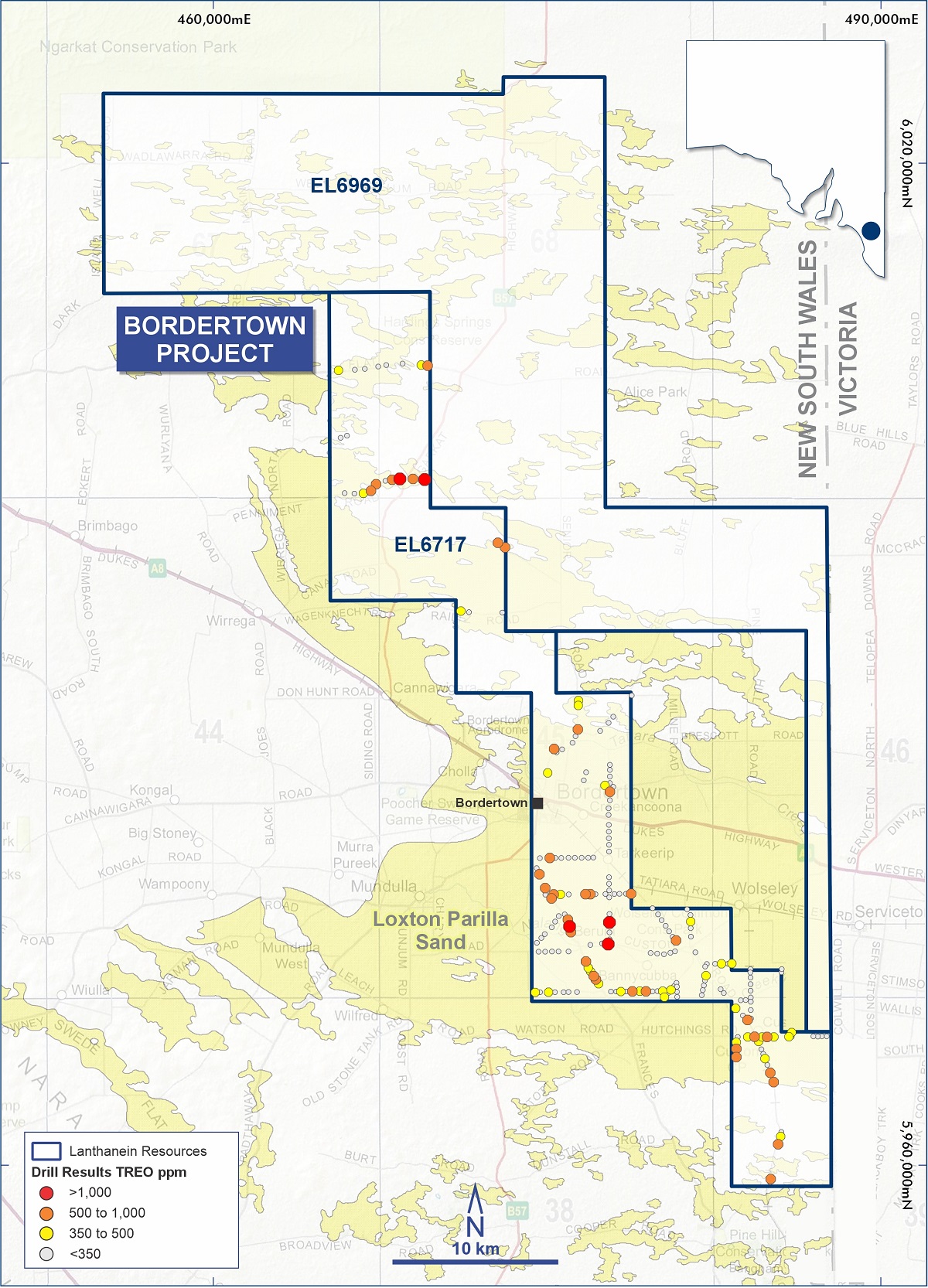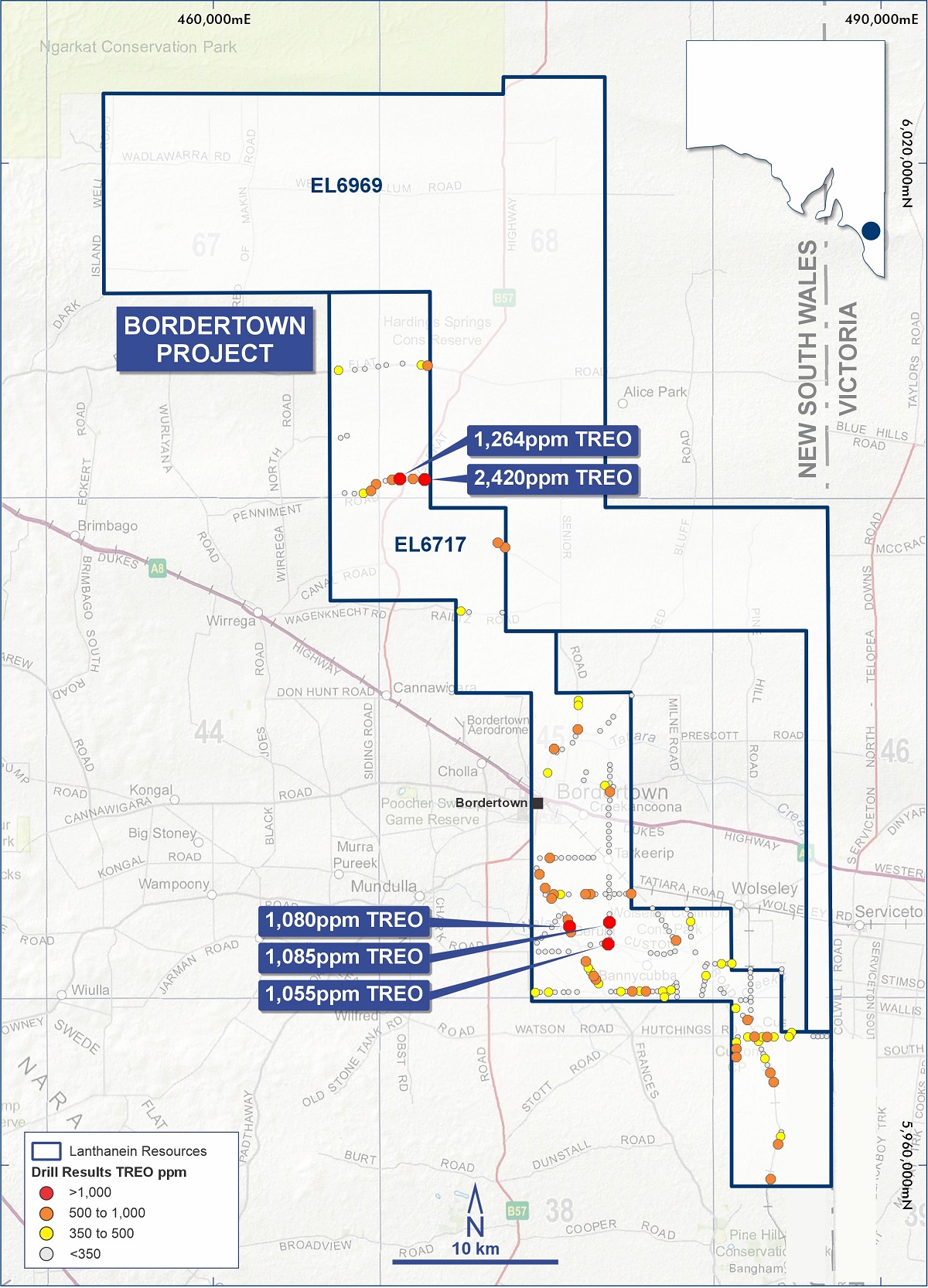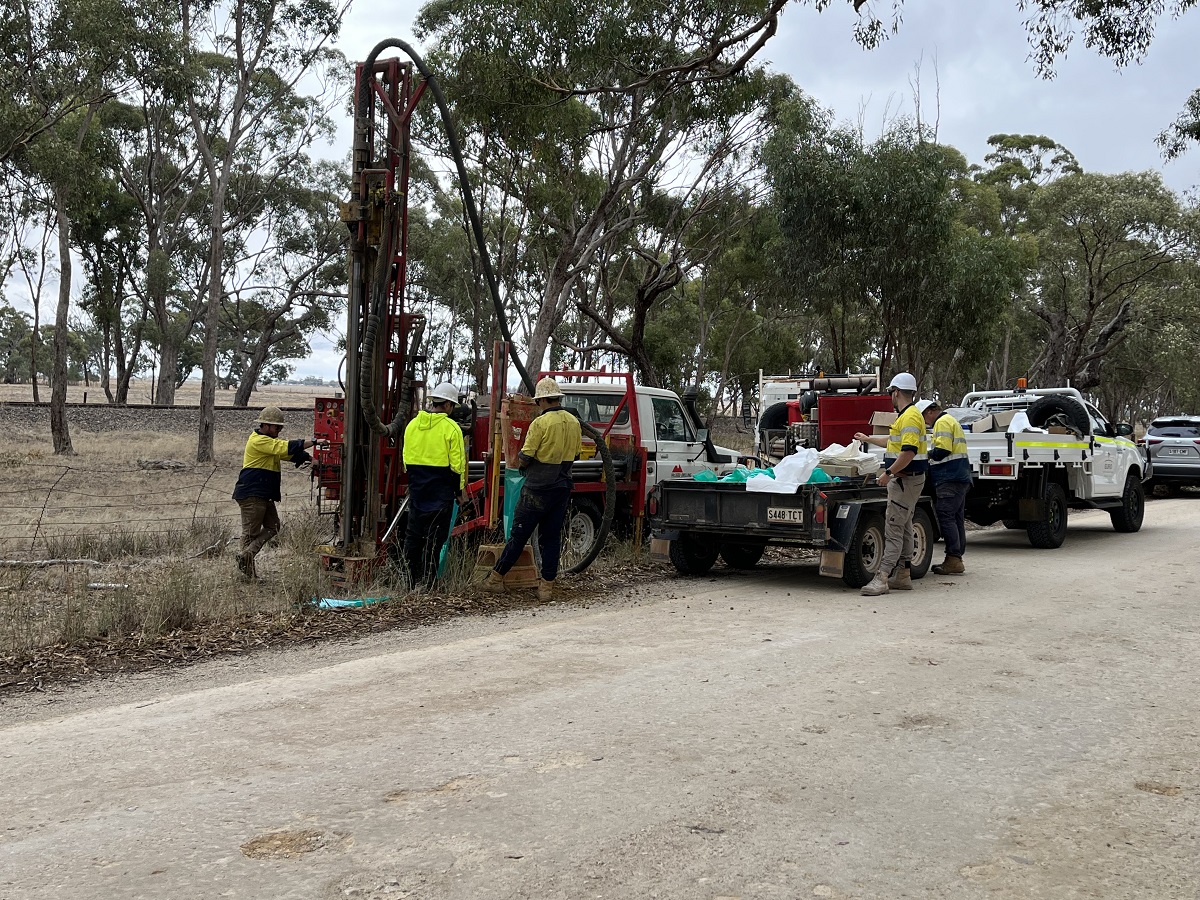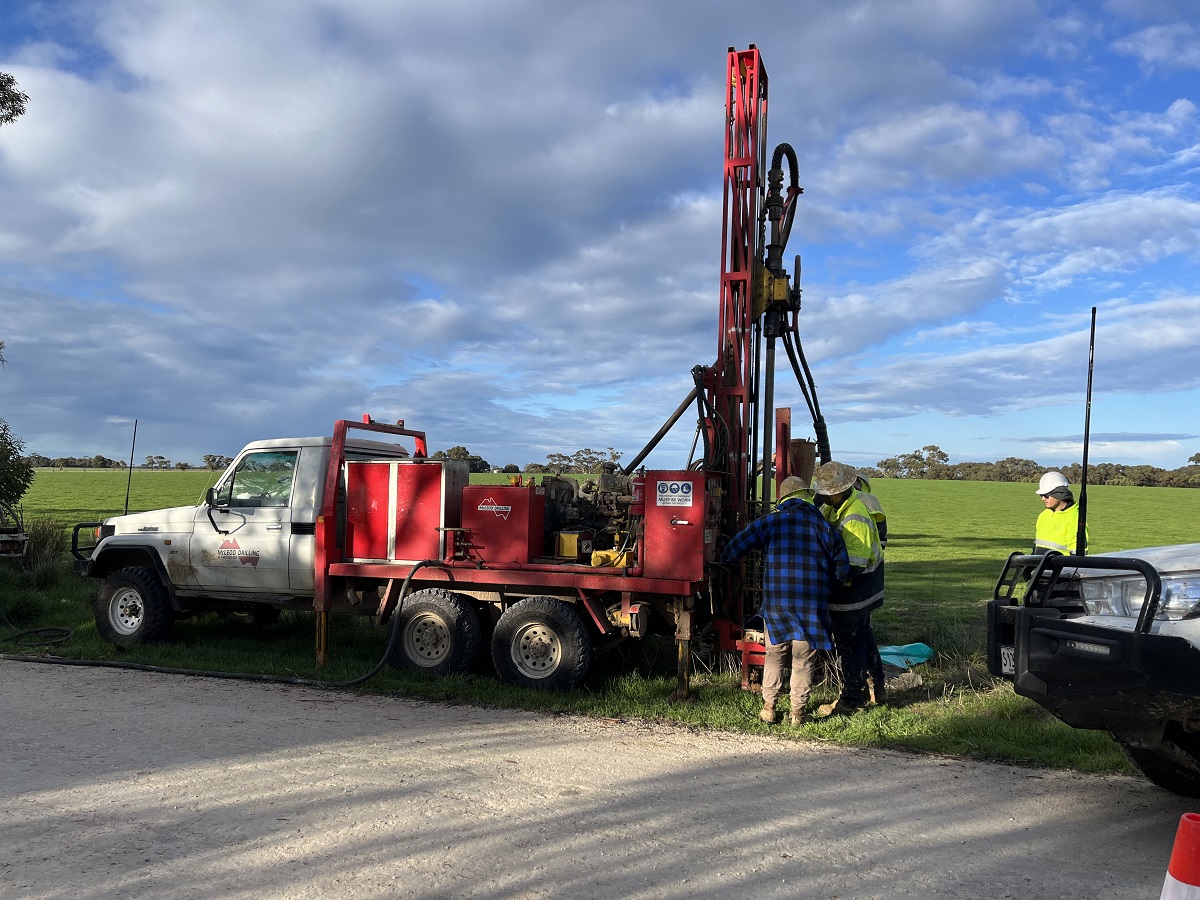Murraydium REE Project
Project Highlights
- Targeting Ionic Clay hosted REE’s.
- Australian Rare Earths (ASX:AR3) have REE Resource at Koppamurra on neighbouring tenement.
- Koppamurra Resource and new AR3 prospect Frances hosted in the same Loxton Parilla Sands as present on Bordertown Block.
Background
Recent drilling by AR3 confirms clay hosted rare earth mineralisation adjacent to the Bordertown Block with results which demonstrates the potential of additional high-grade rare earth ionic clays of global significance across wide portions of the project area.
A roadside drilling programme on EL6717 has highlighted the potential for significant shallow accumulations of REE’s in the Loxton Parilla Sands. As a result of the grades encountered in the eastern margins of EL6717 the Company applied for and has been granted EL6969 immediately adjacent to the Bordertown Block.
Ionic Clay REE deposits are relatively fast to drill and develop, with low capex, simple metallurgy and a high value REE offtake product. Rare earth elements are essential to the clean and technology revolutions taking place around the world, but China dominates their mining. Permanent magnet applications such as in electric vehicle and clean energy are the dominant demand drivers. Supply will struggle to keep up with the rapidly rising demand for critical magnet element such as Neodymium (Nd), Praseodymium (Pr), Terbium (Tb) and Dysprosium (Dy).
There are 17 rare earth elements: yttrium and scandium and the 15 lanthanide elements (cerium, dysprosium, erbium, europium, gadolinium, holmium, lanthanum, lutetium, neodymium, praseodymium, promethium, samarium, terbium, thulium and ytterbium). These are divided into two categories according to their atomic numbers: Light REEs and Heavy REEs. Light ones include cerium, lanthanum, neodymium, praseodymium, samarium and scandium. Heavy ones include yttrium, terbium and dysprosium.

